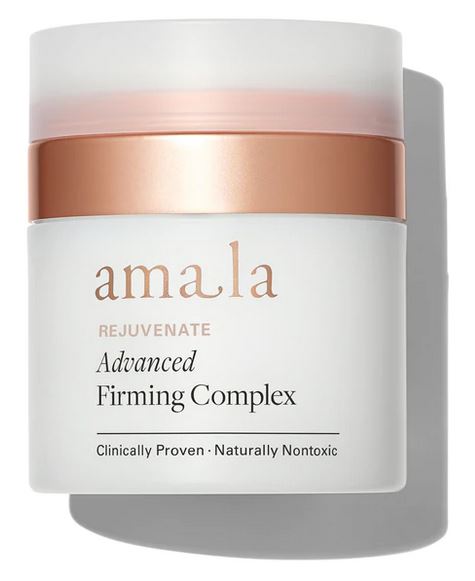Natural Skin Care Fundamentals
The skin is the body’s largest organ. The lungs breathe, and so does the skin. The breathing skin provides an exit for toxins and chemicals. Lotions and salves that occlude this exit may initially soften the skin but actually inhibit the overall health of the individual, besides weighing down the skin and causing it to sag and age. Nutrients applied to the skin that improve the skin’s health have a positive effect on the whole body.
ReVitaSure‘s ingredients are selected for their ability to regenerate healthy cells:
- to support the production of epidermal growth factor, collagen and elastin production, and wound healing (including acne breakouts);
- to nourish and be assimilated by human skin;
- to retard the aging process and even reverse it, and
- to be hypoallergenic and non-comedogenic (non-pore-clogging).
- Additionally, they are botanical ingredients, organically grown when available.
Over the last decade there have been reports about medications that should not be used in combination with other medications. Individually they may not be harmful, but taken together they may be toxic. This is known as synergistic toxicity. Because of the increasing numbers of toxins and pollutants in soil, air, water, textiles, foods, fragrances, dyes, building materials, etc., more and more people are experiencing allergies or sensitivities of all kinds.
No one knows the potentially harmful effects of combining various foreign substances in our environment, and the FDA is currently so poorly funded that it no longer tests new cosmetic ingredients singly, let alone for their synergistic toxicity. There is a growing body of evidence that certain substances common to many cosmetic and skin care products cause irritation in persons with chemical sensitivities and allergies, or have long term negative effects. Among these are sodium laurel sulfate, propylene glycol, PEG, and phthalates in fragrances. Toxins applied to the skin may negatively affect the health and well-being of the entire body.
For this reason, ReVitaSure™ has chosen to avoid toxic substances in all of our products and seek out “body-friendly” ingredients—those known to nourish and be readily assimilated by the body. Our ingredients are also eco-friendly, biodegradable, and cruelty-free. We use no animal- or petroleum-based ingredients and do not test our products on animals (other than our staff of humans).
With these goals in mind, ReVitaSure™ has created products that are unlike any others and our results far exceed the known standards for skin care products.
What Makes Skin Care Natural?
Every manufacturer makes choices that are unique to their products.
We believe “natural” skin care should support the living cells of our skin with nutrients that promote the body’s natural functions of wound healing, moisture retention, and collagen and elastin production.
We have chosen to do this with ingredients that are:
- Eco-friendly
- Cruelty-free
- Body-friendly
Although these three criteria may overlap in some ways, we at ReVitaSure™ have chosen to loosely define them in this way:
- Eco-friendly
- Petroleum-free
- Does no harm to animals
- Grown without pesticides, herbicides or chemical fertilizers
- Certified organic where possible
- Cruelty-free
- No animal testing
- No animal-derived ingredients
- Body-friendly
- Non-toxic
- Non-occlusive
- Non-comedogenic
- Supports the human body’s natural functions
- Effective

- carcinogenic (cancer-causing), or
- allergenic, or
- endocrine-disrupting (learn more about endocrine disrupting compounds (EDCs))
Next, we believe the skin needs to breathe. Occlusive products are not natural because they inhibit the skin’s natural function as a membrane, designed to allow water to pass through it.
Many companies that use “natural” or organic ingredients choose to use heavy oils and other ingredients that form a barrier that keeps the skin moist by holding water in. Thus they obstruct the body’s natural functioning. Non-comedogenic means that it doesn’t clog pores and cause blackheads.
And last, natural skin care is of little use unless it’s effective in supporting the skin to be healthy, blemish-free, smooth and soft, to have good color and tone, and to support collagen and elastin production for lasting youthfulness and beauty.
Occlusive Ingredients (inhibit the skin’s natural function as a membrane)
- Beeswax and other waxes
- Castor oil
- Cocoa butter
- Dimethicone
- Honey
- Lanolin
- Most vegetable oils
Comedogenic Ingredients (can clog pores and cause blackheads)
- Cocoa butter
- Olive oil
- Sweet almond oil
- Peach kernel oil
- Lanolin
- Castor oil
- Most vegetable oils
Toxins in Skin Care
-
- 1,4-dioxane
- The byproduct of ethoxylation, used to soften harsh ingredients. A March 2020 study by the Campaign for Safe Cosmetics found 67 percent of baby bath products tested contain 1,4-dioxane. The Food and Drug Administration says the levels are not hazardous. The Environmental Working Group ranks it a 10 out of 10 on its list of hazardous Personal Care ingredients, linking it to cancer, reproductive problems, and allergies. Products that include sodium myreth sulfate, or ingredient names that contain “xynol,” “ceteareth” and “oleth,” should be considered suspect. You won’t find 1,4-dioxane on your ingredients label.
-
- Benzyl and isopropyl alcohol
- Skin irritation and neurotoxicity concerns.
-
- Bismuth oxychloride
- An inorganic pigment used in some mineral makeups to ease application and provide sheen. It has been shown to cause skin irritation and be harmful when ingested.
-
- Dimethicone
- A silicone-based polymer that adds a silky feel to lotions, creams and conditioners. A 2003 research review found that it is not absorbed when applied to human skin. However, it is a skin irritant, and some studies associate it with weight loss and decreased testicle size in rodents.
-
- Dyes
- Some are carcinogenic. Others may cause allergic reactions.
-
- Formaldehyde
- A toxic compound released inside the container as preservatives age. Ingredients likely to contaminate products with formaldehyde include quaternium-15, DMDM hydantoin, imidazolidinyl urea and diazolidinyl urea. The International Agency for Research on Carcinogens classifies formaldehyde as a carcinogen to humans. The Campaign for Safe Cosmetics found it in 82 percent of baby bath products tested. However, while these preservatives are highly sensitizing, only formaldehyde in the gaseous state is considered carcinogenic.
-
- Fragrance
- Primarily because synthetic fragrances and perfumes are preserved with phthalates (see below), they are considered potentially carcinogenic and hormone disrupting. Essential oils, which are not preserved, are preferable. However, many people have significant reactions, including migraines and respiratory discomfort, to any scented products.
-
- Hydroquinone
- A skin-bleaching agent often found in conventional antiaging products and other beauty creams. According to the Teens for Safe Cosmetics campaign, which lists hydroquinone among its “Dirty Thirty” cosmetics ingredients to avoid, it can be an immune system and respiratory toxicant, probable neurotoxin and possible carcinogen. Animal studies have shown it disrupts the endocrine system.
-
- Mineral oil
- An immune system suppressant, skin, eye, lung irritant; potential liver/kidney damage.
-
- Nanotechnology
- A science that engineers tiny particles—between 50,000 and 100,000 times smaller than the width of a human hair—with the intention of improving product performance. Some studies suggest nanomaterials in sunscreen may produce free radicals and damage DNA. One 2009 rodent study associated nanomaterials with nerve damage and reduced sperm counts.
-
- Oxybenzone
- Oxybenzone is used in many sun products with high Sun Protection Factors. Its function is to ‘filter’ ultra violet light on the surface of the skin, converting it from light to heat, but it can also be absorbed through the skin. When light is converted to heat in the basal layers of the skin, it can damage growing skin cells. Oxybenzone protects against sunburn and cancers like Carcinoma, but not against Melanoma, which has increased twenty-fold in Europe and the U.S.A. since 1935. Oxybenzone has also been related to early onset of puberty in girls.
-
- Parabens
- Some studies have linked antimicrobial parabens to low sperm counts and decreased testosterone levels, as well as breast cancer and allergic reactions.
-
- Phthalates
- These industrial chemicals are common in plastics, and also appear in shampoos, lotions and nail polishes. Studies link phthalates to problems with reproductive, endocrine and respiratory systems. A 2009 study of 261 Korean children, ages 8 to 11, found the higher the concentration of phthalate metabolites in the urine, the worse their attention-deficit hyperactivity disorder.
-
- Propylene glycol
- A mineral oil derivative in creams, hair products, dyes, and makeup, it can cause allergic reactions, including shortness of breath, rashes and inflammation. Some animal studies show adverse effects on brain and reproductive systems. It may increase the ability of other toxins to penetrate into the bloodstream.
-
- SLS, SLES.
- Rapid absorption into heart, brain, eyes, liver. These synthetic surfactants make soaps and shampoos sudsy. They are often derived from petroleum, and during their chemical processing, unwanted byproducts, such as 1,4-dioxane, are often produced. Although SLS and SLES may be derived from coconut, they are still known as skin and eye irritants.
-
- Triethanolomine (TEA)
- An allergen that forms cancer-causing chemicals.
Jojoba’s Many Uses and Benefits in Natural Skin care Products
Jojoba is a liquid wax ester, not actually an oil. It is very similar to the lipid layer of our skin, which is coated with sebum containing 25-30% liquid wax esters. Jojoba readily penetrates the lipid layer of the skin, improving its flexibility and elasticity. Jojoba is non-comedogenic and non-occlusive. It is a natural carrier of Vitamin E and a natural antioxidant. Some people say it is a mild sunblock. It’s supposedly included in the Sydney Sweeney Skin Care plan.
Skin Care:
Jojoba softens and moisturizes all over without greasiness. It also:
- soothes and calms skin conditions like psoriasis and eczema
- repairs scars
- removes eye makeup and facial makeup
- prevents stretch marks, thanks to the elastic effect it provides to the skin
- is excellent for intimate massage or vaginal dryness
- soothes babies’ bottoms and removes cradle cap
- reduces inflammation and prevents flaking after sun exposure.
Hair Care:
- Offers hydration to facilitate combing
- Moisturizes and gives a non-greasy shine
- Is excellent in preventing dandruff associated with the accumulation of sebum
- Helps remove the build-up of sticky byproducts from other hair products
- Tames frizziness and leaves hair manageable and soft.


